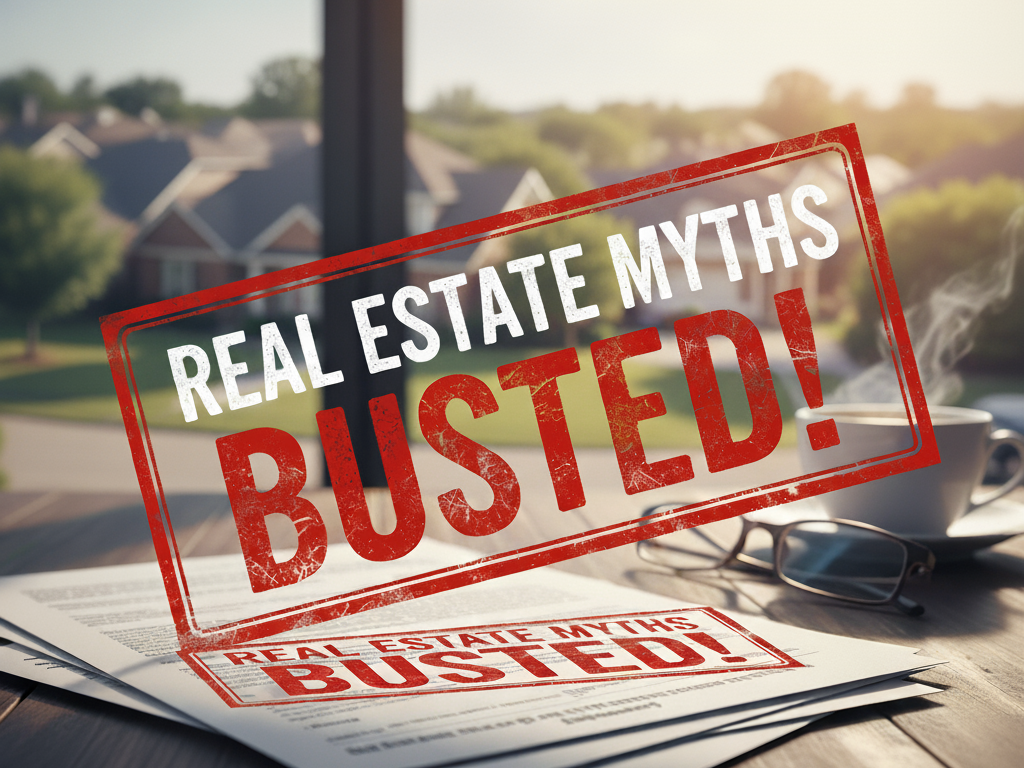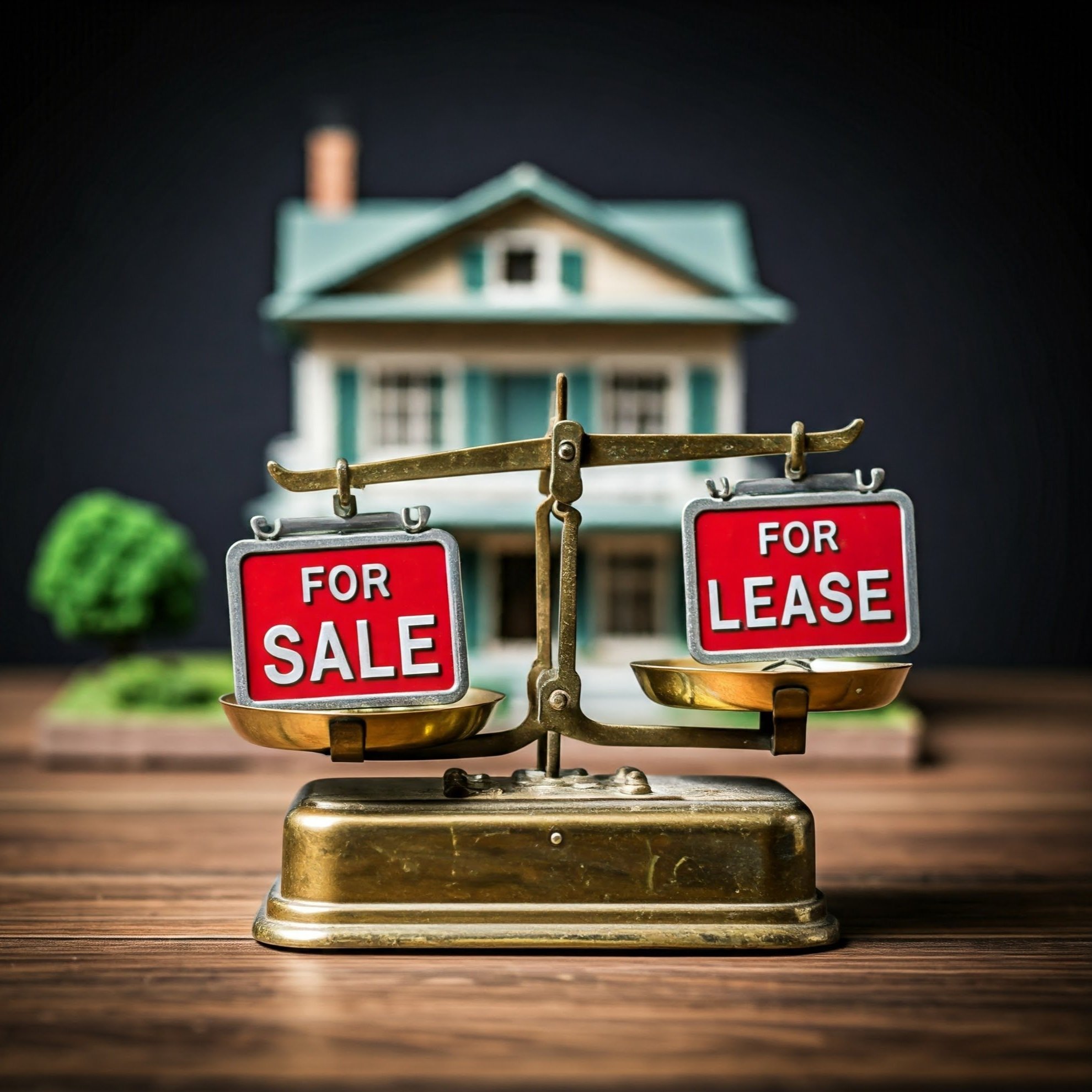Cash Flow vs Appreciation: Which is More Important for Real Estate Investors?
Many investors are attracted to rental properties because of their potential to produce cash flow. Building an income stream from rental properties can be incredibly powerful: for me and many others investors, this has provided freedom and flexibility that would have been impossible otherwise.
But rental properties also hold the promise of building wealth as home prices rise over time. This leads many investors to buy in markets and neighborhoods where they believe home prices are primed to rise the most.
But which is more important, cash flow or appreciation? Which should you focus on more as an investor? And which will make you more money in the long run?
These questions have been debated for decades among rental property investors, which has led to two competing schools: Cash Flow investors who focus on producing income and maximizing cash-on-cash returns, and Appreciation investors who focus on making their money as home prices rise.
In this article, I’ll examine these all-important questions – and as always, I won’t use anecdotal arguments or generic statements, but rather detailed modeling and data, to attempt to find the real answers to these questions.
Based on this analysis, you should be able to decide for yourself which school – Cash Flow or Appreciation – you want to be in.
And BTW, if you want more personalized help devising your real estate investing strategy and getting into rental properties, you should know that’s the exact kind of help I provide to my private coaching clients. In fact, I’ve helped my clients purchase over $25M (and counting) of real estate that is now generating cash flow and building wealth for them. Schedule a free consultation if you’d like to chat with me about rental property coaching, or learn more about my coaching program & structure.
OK — let’s dive into the discussion of cash flow vs. appreciation!
Which will make you richer, Cash Flow or Appreciation?
Let’s start with the most basic and important question about cash flow vs appreciation: which is likely to make you more money in the long run?
In order to answer this question, we’ll need to use a model to forecast our expected gains into the future. Luckily, I’ve already built a model that does exactly that — the RIA Property Analyzer, which contains a cash flow/ROI calculator and a multi-year model.
We’ll also need to make some assumptions about the underlying financials of our target property. As I’ve done in numerous other articles, I’m going to use a sample property that is substantially similar to the properties I find in cash flow markets today, and that I review nearly every day on behalf of my clients. So let’s imagine an acquisition with these parameters:
Purchase Price: $129,000
Closing Costs: $6,000
Monthly Rent: $1,250
Maintenance & Repairs: 1% of purchase price ($1,290) per year
Property Taxes: $1,300/yr
Insurance: $650/yr
Property Management: 8%, plus leasing and renewal fees
Budgeted Vacancy: 5%
Mortgage: 30-year fixed, 25% down, 6.25%
When I plug these inputs in the Property Analyzer, here are the ROI metrics it generates:
Overall, these are solid but unspectacular cash flow numbers. Let me highlight a few key numbers:
Cash invested in the deal is $38,250
Monthly average cash flow: $197
Cash-on-cash returns are 6.2%
Total ROI (with 2% appreciation & principal reduction) is 15.9%
(Want to use this calculator? You can! I make it available as a free download.)
Also notice that annual cash flow is $2,372, while appreciation (at 2%) is $2,580. So in the first year at least, appreciation is making slightly MORE money, even at the relatively slow rate of 2%. If home prices increase faster, then appreciation would earn you MUCH more money.
But what do the long-term numbers look like? Let’s consult the multi-year model and look at those figures.
Here again, we have to make assumptions in our model about what will happen in the future. How fast will rents go up? How fast will expenses go up? And how fast will home prices go up?
As a default, I peg all those numbers to the same value: 2%, which is the long-term rate of inflation targeted by the Fed’s monetary policy. It’s quite reasonable to assume that all these values — rent, expenses, and home prices — will go up over time together at the rate of inflation.
But the answer to our main question here (will cash flow or appreciation make us more money) depends quite a bit on those long-term assumptions. Here’s what it looks like using 2% for all those values — there’s a LOT of numbers in this table, so I highlighted the two most important rows in yellow that show Cumulative Cash Flow and Cumulative Appreciation at various points in a 40-year investment horizon:
You can see those same numbers in Year 1 ($2,372 in cash flow vs. $2,580 in appreciation), but cash flow grows noticeably faster over the years. As a result, cumulative cash flow overtakes cumulative appreciation by Year 4, and continues to pull away. By Year 20, cash flow is leading by a wide margin, $88K to $62K. (How is it possible that cash flow grows faster than appreciation, even though everything is increasing at 2%? Because one expense that determines your cash flow — your mortgage — NEVER goes up.)
So we have our answer, right? Cash flow makes more money on a deal like this one.
Well…not so fast. Let me put the results into a graphical format, and compare the results when we change those long-term assumptions about price and rent growth. If all prices increase at a faster rate, or if home price growth outpaces rent and expenses, then appreciation quickly becomes the star:
Rent Growth: 2%
Expense Growth: 2%
Home Price Growth: 2%
Rent Growth: 3%
Expense Growth: 4%
Home Price Growth: 5%
Rent Growth: 6%
Expense Growth: 6%
Home Price Growth: 6%
Rent Growth: 2%
Expense Growth: 2%
Home Price Growth: 8%
What do we learn from this? I’d summarize it this way: cash flow and appreciation are both important components of your potential ROI with rental properties. But if you find a property that appreciates disproportionately quickly, and faster than rent, then appreciation can potentially make you a TON more money.
This is the outsized potential that the Appreciation school of investors is focused on. And looking at that final graph, it’s easy to understand why they largely ignore cash flow in their investments — they’re chasing much richer rewards.
But how often has that final scenario played out in practice? In other words, how often can we reasonably expect appreciation to hit 8% over a period of 40 years? Let’s look at some historical data and find out.
A Brief History of Home Prices
Here’s a graph of median U.S. home prices since 1963, when modern record-keeping on this began:
Obviously, home prices have gone up over time. This is largely due to inflation, but it’s also due to other economic factors: the supply of homes; the size of homes (which have grown significantly over the years); and the cost of supplies and labor, to name but a few.
On average, though, homes HAVE increased somewhat faster than inflation in the last half-century:
The disparity between home prices and inflation is likely due to two main factors: the increasing size of homes over this period; and the supply shortage of homes since 2008. But it’s a relatively small difference — it’s fair to say that on average, home prices increase with inflation, or perhaps a little more. It’s also fair to say, then, that it will be VERY rare for a home to increase in value by 6-8% (or more) over a period of decades, and materially outpace inflation. The averages just don’t support it.
In other words, that last juicy appreciation graph in the previous section will be extremely tough to find. Home prices just don’t behave that way, generally speaking.
But we still want those huge returns from appreciation! There’s gotta be a way to predict how home prices will behave, right? To pick the right market, the right neighborhood, the right house, and achieve that big pop in home values — right?!?
Can Home Price Appreciation Be Predicted?
A lot of people think they can predict what will happen with home prices — nationally, or in a specific market or neighborhood. People go on television to talk about it every day; bloggers and YouTubers make their predictions as well. They all claim that their insights, or some available data, or a specific algorithm will reliably predict this. Most small investors also believe they have sufficient insights to predict this — that’s why they so often buy properties that cash flow poorly, thinking that appreciation will carry them.
There are numerous common theories about how to predict home prices. At the market level, people will focus on things like:
price growth in recent history
population and job growth
net migration stats
investment from industry
urban renewal projects
What you NEVER see is a regression analysis to see if any of those metrics is truly predictive of future home price growth. We’re asked to believe in their predictive value because it “makes sense” — but nobody actually has the receipts to back up this claim.
We can look at historical data all we want, and it still may not tell us anything about the future. For example, here’s a useful infographic of home price growth by market since 2000 — you can hover over markets for their individual stats:
We can quickly see the familiar boom-towns of recent decades stand out, including South Florida, Austin, Phoenix, Seattle, and numerous California cities.
But what do the last 20 years tell us about the next 20? Hard to know. Growth in California has slowed to a halt as people increasingly choose to move to cheaper places. Will prices in those places also lag other markets in the next 20 years? Everyone has a theory…but the truth is that nobody really knows.
For example: if we zoom in on the last 1-2 years, Austin has actually been among the WORST performing markets in the country. I don’t remember hearing all those prognosticators warning about the imminent collapse of the Austin market, do you? Instead, nearly everyone fell into the common logical fallacy of extrapolating recent trends in a straight line into the future. In reality, nothing works as simply as that, including home prices.
Here’s another example: I started building my Memphis rental portfolio in 2018. If you had asked 100 investors at that time which Tennessee market — Memphis or Nashville — would be the better appreciation market, what would they have said? I think all 100 would have said Nashville, which was growing quickly and getting lots of attention for its burgeoning cultural scene, and “hip factor”. What actually happened in the last 6+ years? Nashville prices went up 64%, while Memphis prices went up 76%. Surprise!
But what about at the NEIGHBORHOOD level, you ask? Can’t we, say, buy in the path of progress, or notice where Starbucks and Panera are opening new stores, or focus on where new job centers are being built? Won’t nicer neighborhoods have more appreciation potential than less-nice ones?
Once again, there is no evidence that these methods are predictive. Counterexamples are exceedingly easy to find. Here’s just one from Memphis during the last 6 years I’ve been invested there: prices in zip code 38135 (B+/A- area) went up 72% since 2018, with average home prices now $312K. Meanwhile, prices in 38127 (C area) went up 100% in the same period, with average home prices now $91K.
(Quick aside: the widely prevalent idea that nicer homes will always appreciate faster than cheaper ones is, when you think about it, completely nonsensical. If that were always true, the proportional difference between the two would grow forever — a nice neighborhood whose home prices today are 3x higher than another neighborhood would eventually grow to 4x higher, then 5x, eventually 10x, 20x, and so on. In reality, there are plenty of times when the OPPOSITE is true — in fact, over the last 5 years, 75% of markets saw their low-tier homes outperform high-tier homes, exactly what I saw in the Memphis zip code example in the previous paragraph.)
Here’s the main point: the actual results we observe in the marketplace are much more chaotic than we presume, and do not submit to easy algorithmic prediction.
Or said more simply: the future of home prices is a black box, and nobody knows anything.
The Appreciation Trap
Because the POTENTIAL returns from disproportionate price gains are so high, many investors are tempted to chase appreciation. They convince themselves they can predict home price changes at the market or neighborhood level, and then buy what they think are ideal appreciation properties — typically giving up significant cash flow to do so.
That’s because “appreciation properties” will be much higher-priced on average, and expensive homes don’t cash flow as well as cheaper ones. (That’s why cash flow investors focus on markets where homes are relatively inexpensive, like these markets.)
This is what I call “The Appreciation Trap”. Chasing higher but ultimately unpredictable returns from appreciation, investors sacrifice cash flow. By doing so, they LOWER the average Total ROI they should reasonably expect from their investments. They cease being savvy investors, and instead become speculators, pulling the lever at the casino and hoping to hit the jackpot.
Sometimes they guess right, and look like geniuses. More often, though, they don’t achieve the appreciation they hoped for, and then start wondering why they have so much equity tied up in properties that don’t cash flow.
I should know, because I fell into The Appreciation Trap myself. Before I started building my Memphis portfolio, I owned several small studio condos in New York City, where I lived at the time. I had lived in NYC my entire adult life, and knew the market very well. I bought in outer borough neighborhoods that I had good reason to believe were poised to “pop” — one in Queens, one in Brooklyn, and one in Staten Island. My goal was to have them be cash flow neutral so I wasn’t LOSING money while holding them, but to make my money with price gains over time (and by paying down the mortgage over time.)
Spoiler alert: this did not work very well. At ALL. Here’s the very ugly financial summary of those three “investments”:
My (Non-)Appreciation Properties:
Obviously, these are lackluster returns. Property #3 lost money in absolute terms, so I would’ve been better off putting the money under my mattress. Property #2 eked out a small gain, but over the 7 years I held it, that amounted to just 2% total annual ROI, not even enough to keep up with inflation over that period. Property #1 was the best of a bad lot, but it still underperformed the stock market, and significantly underperformed what I would have earned with a cash-flow rental property. (Ironically, one of the big reasons this property was better than the other two is that the cash flow was neutral, whereas I was in the red at the other two properties.)
So the Appreciation Trap caught me in its wicked web! But I’m smarter now: I understand the financial fundamentals of cash flow investing, and I humbly admit that predicting future home price appreciation is impossible, for me or anyone else.
Chasing large gains from appreciation is speculation. When I model my total returns on my rental properties, I expect to make plenty of money from BOTH cash flow and appreciation, but I focus on what I can control — cash flow — and assume inflationary price growth into the future. In other words, I assume my returns will look like the FIRST graph from above, which you’ll remember looks like this:
Conclusion
So where doest that leave us? What should you focus on as an investor?
I would summarize the key takeaways this way:
Both cash flow and appreciation can provide significant long-term gains in real estate investing.
Future home price changes cannot be reliably predicted — by anyone.
Appreciation MAY make you more money in the long run, but only if you get lucky.
Therefore, you should focus on maximizing cash flow, which is something you CAN predict and control
When you model your returns, assume inflationary growth in home prices, rent, and expenses. If home prices go up faster, that’s great — but it’s just extra icing on the cash flow cake.
About the Author
Hi, I’m Eric! I used cash-flowing rental properties to leave my corporate career at age 39. I started Rental Income Advisors in 2020 to help other people achieve their own goals through real estate investing.
My blog focuses on learning & education for new investors, and I make numerous tools & resources available for free, including my industry-leading Rental Property Analyzer.
I also now serve as a coach to dozens of private clients starting their own journeys investing in rental properties, and have helped my clients buy millions of dollars (and counting) in real estate. To chat with me about coaching, schedule a free initial consultation.


































